If you have LEGO trains, you probably have LEGO train track. Different kinds of LEGO train track have appeared in train sets from the very beginning and have evolved to the gray track that we have today. What parts can you buy in the store today? Come along on this journey as I share all about LEGO train track.
Evolution
The first generation of LEGO train track was released in 1966. This basic track featured blue plastic rails with white 2 x 8 plates serving as the ties. The rails were unpowered with the locomotive being powered by a 4.5V battery in the tender.
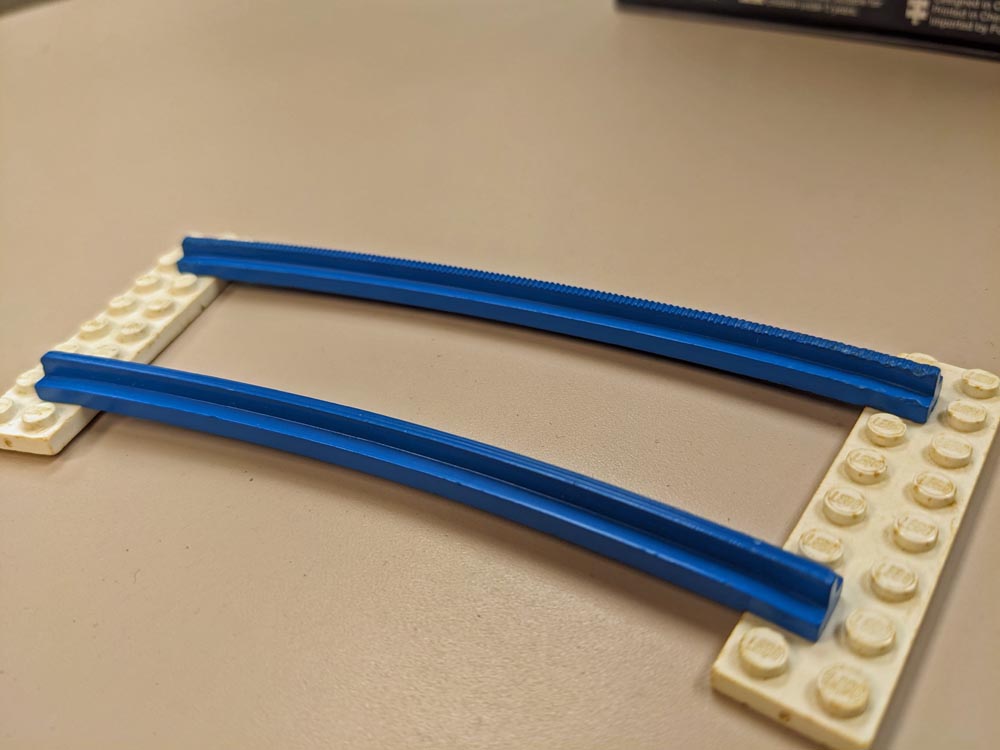
In 1969, LEGO introduced the 12V line of trains. These used the same basic track with blue plastic rails and white 2 x 8 ties. In addition, two conducting rails were added in the center of the track that carried 12V from the transformer to pickups on the bottom of the locomotive. No longer was a battery required.
1980 brought about the “gray era”. The blue rails were now light gray and the power components in the locomotives and track were improved. The center rails continued to provide 12V to the trains; there were even working lights and remote-controlled switches and signals. In addition to the rails being changed to light gray, the ties were changed to dark gray. This gave the track a look closer to what we have today.
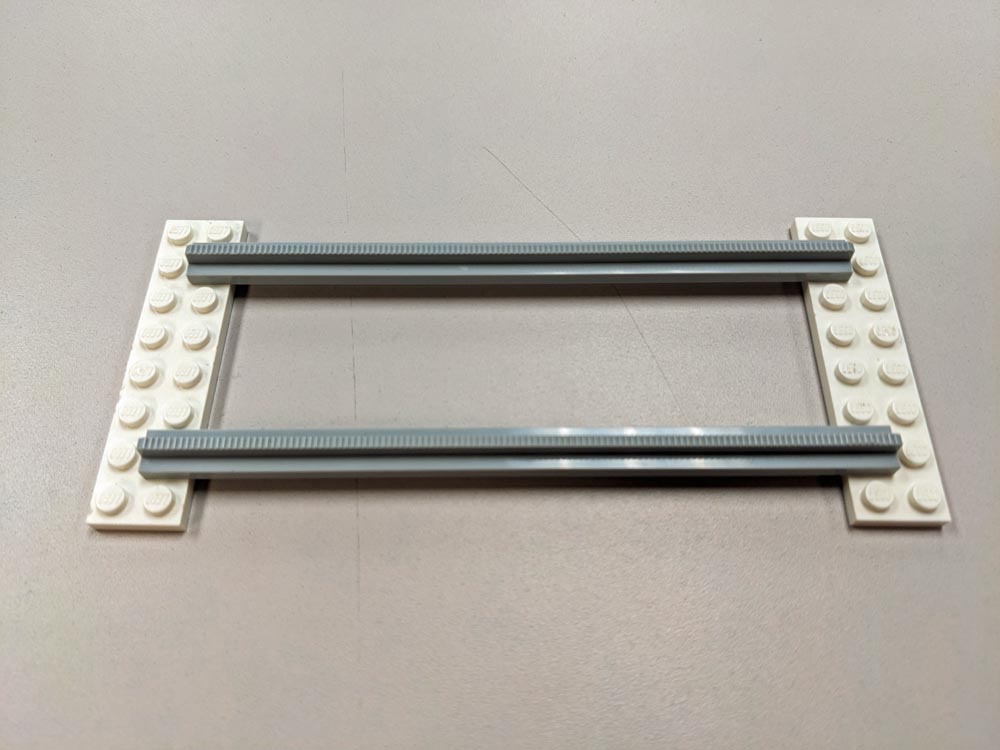
LEGO train track in the modern era
1991 was the year that changed everything. No longer was the builder required to build their own track with rails and ties. Now, the rails and ties were one piece. On top of this, the center conductive rails were gone and replaced with conductive strips on the top of the rails. The gauge of the track remained the same, however, so older locomotives and rolling stock could still roll on the new system’s rails.
Instead of 12V, the new system carried 9V to the trains. This was the beginning of the 9V era. Though remote-controlled switches and signals weren’t brought into the new era, manual switches, crossovers, and lights were brought along.
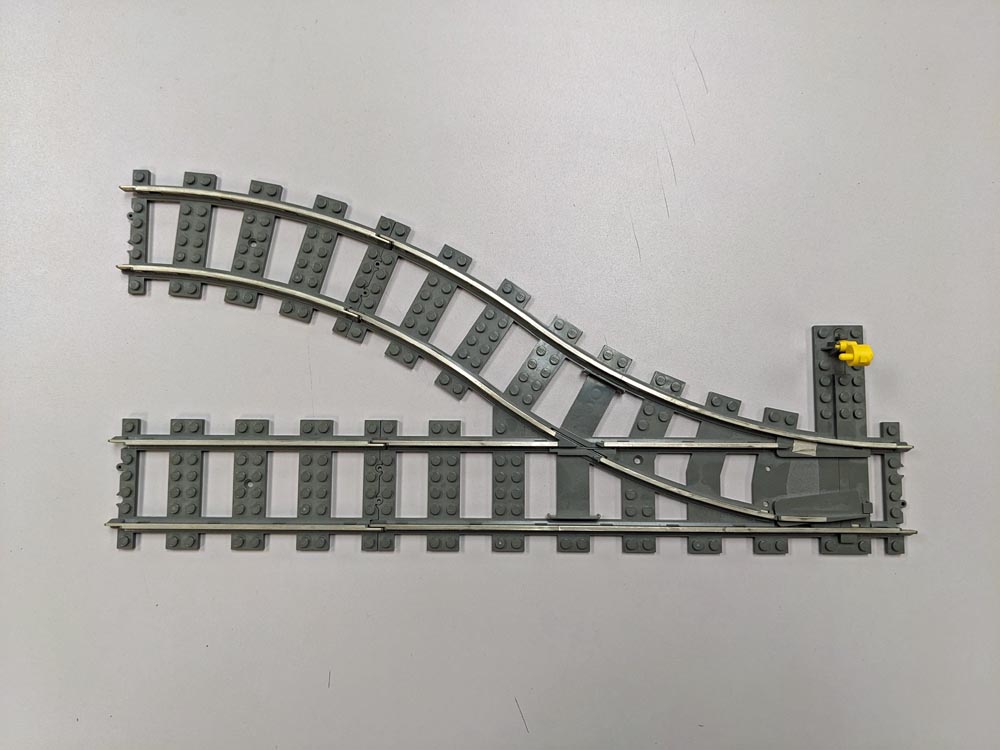
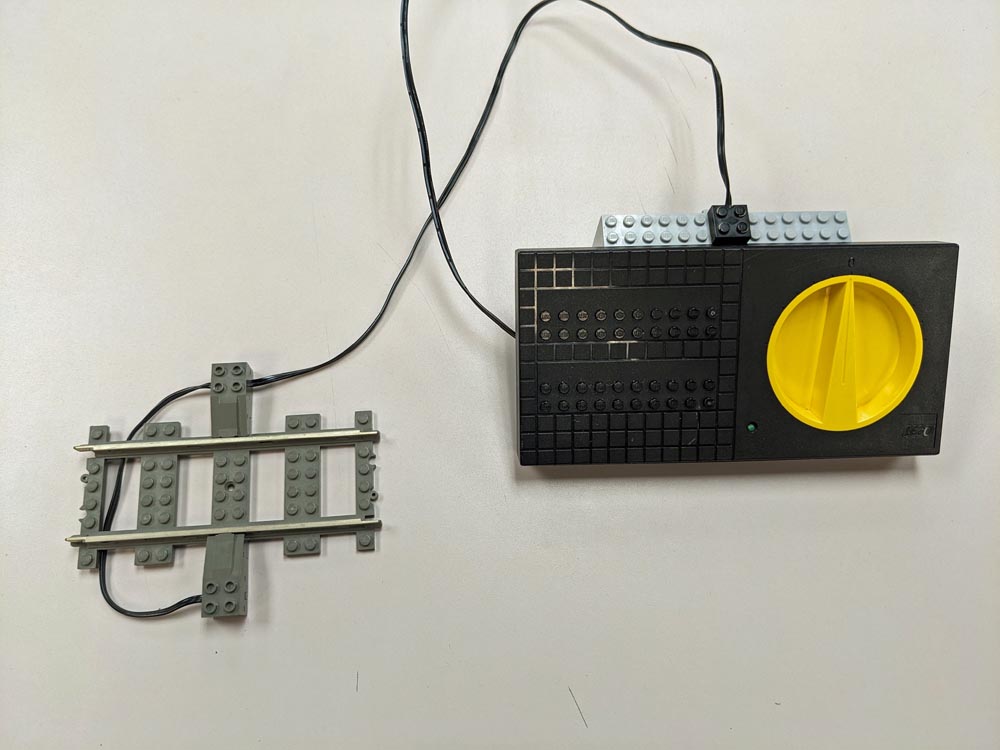
In 2006, LEGO introduced the current generation of train track. This “RC era” uses the same geometry as the 9V track system, but without the conductive rails. Since the track is intended to be used with RC, Power Functions, and PoweredUp trains, all of which use batteries, they no longer need power from the rails. Switches were brought over and feature the same geometry; however, the crossover piece was not released under the new system.
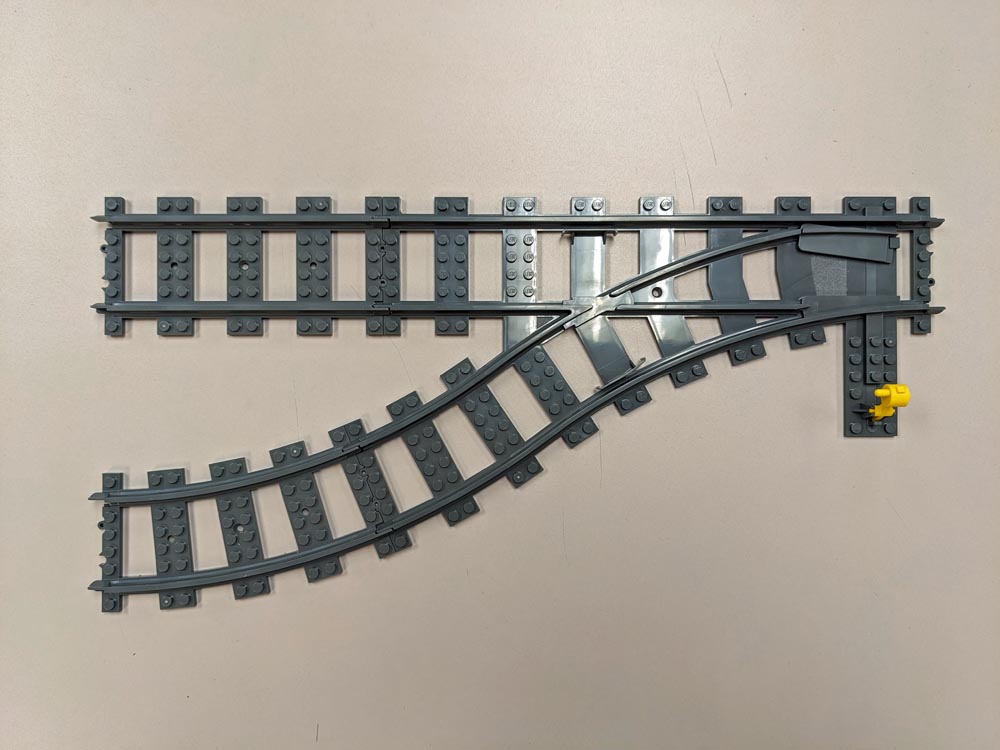
A brand-new kind of track was released with the RC system, flexible track. These pieces are just four studs long and pivot in the middle. You can compare this to model railroad flextrack. Four flexible track pieces are the same length as one straight piece of track. They can also make wider curves if you wish to have a double-track mainline.
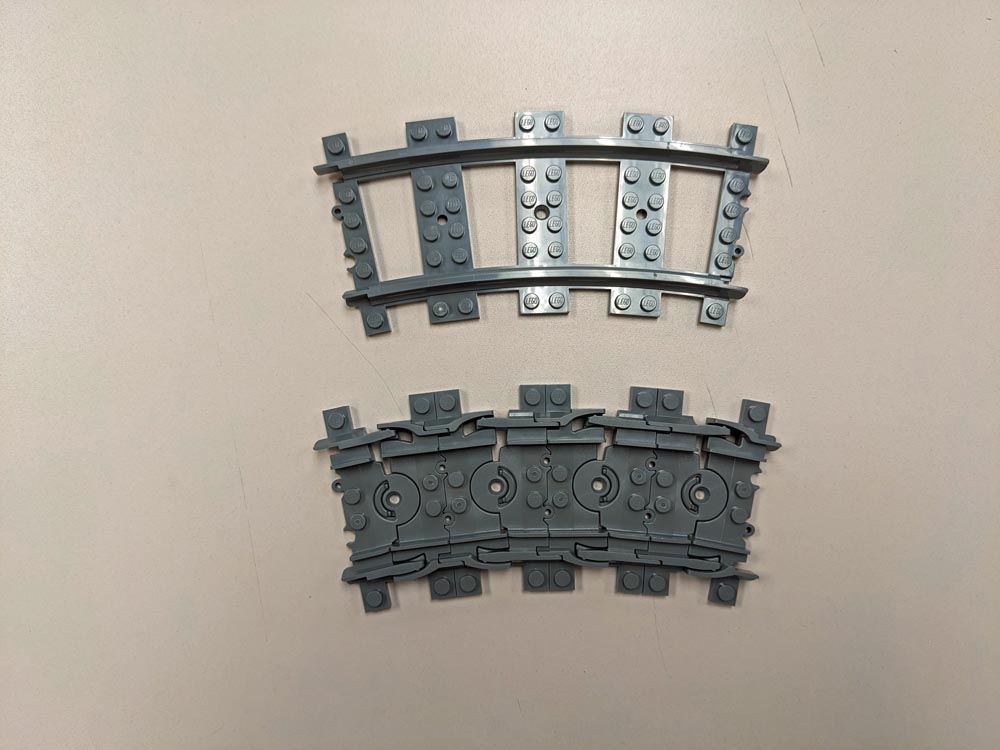
Another new piece is the plastic ramp. This is a ramp that takes trains from ground level up to rail height. It also funnels the wheels from a width of eight studs to the six-stud gauge of the track. Think of it kind of like a rerailer for model trains. This piece is exclusively found in sets that don’t feature a full length of track, such as the Hogwarts Express.
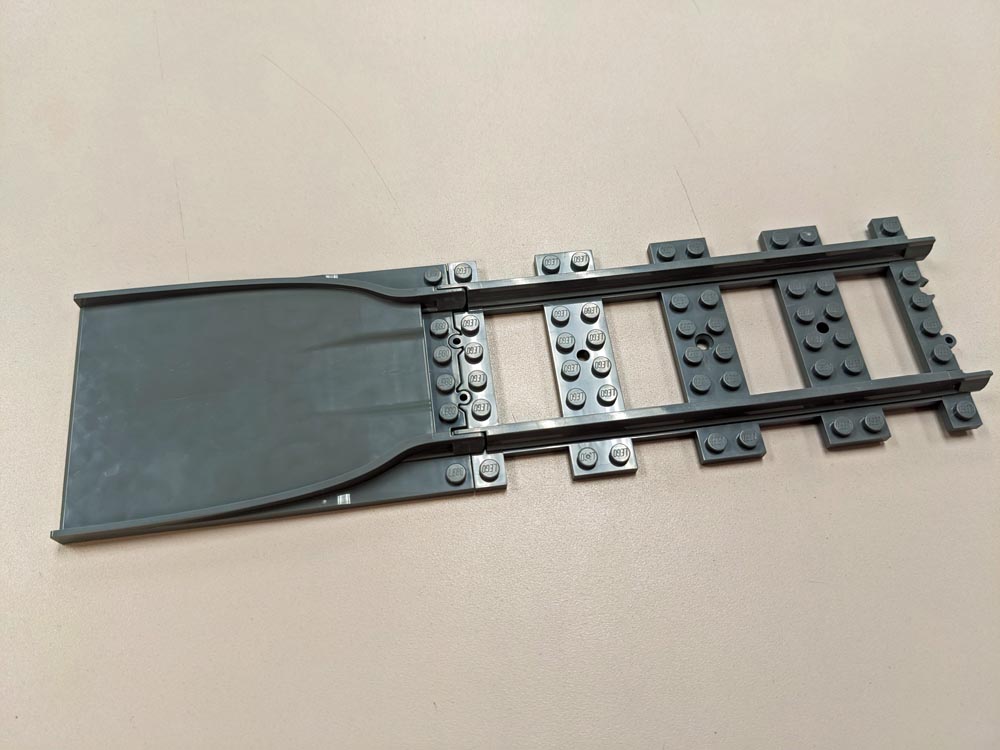
Rounding out the new pieces that were introduced with the RC system is the double crossover. This combines four switches into two sections that create one crossover. There is one switch on each end of the crossover, allowing for four total positions. The double crossover (set no. 7996) was released in 2007 and only had one run.
In addition to the Hogwarts Express, Train Station, Freight Train, and Express Passenger Train, the following track packs are currently available from LEGO:
LEGO City no. 60205, Tracks, includes four curved pieces, eight straight pieces, and eight flexible tracks. For reference: 16 curved pieces make a complete circle.
LEGO City no. 60238, Switch Tracks, includes a lefthand switch, a righthand switch, and four curved pieces.
It’s quite interesting to watch the evolution of LEGO train track from the “blue era” to the modern system. What LEGO track do you own? Do you have a favorite? Let us know in the comments field below.








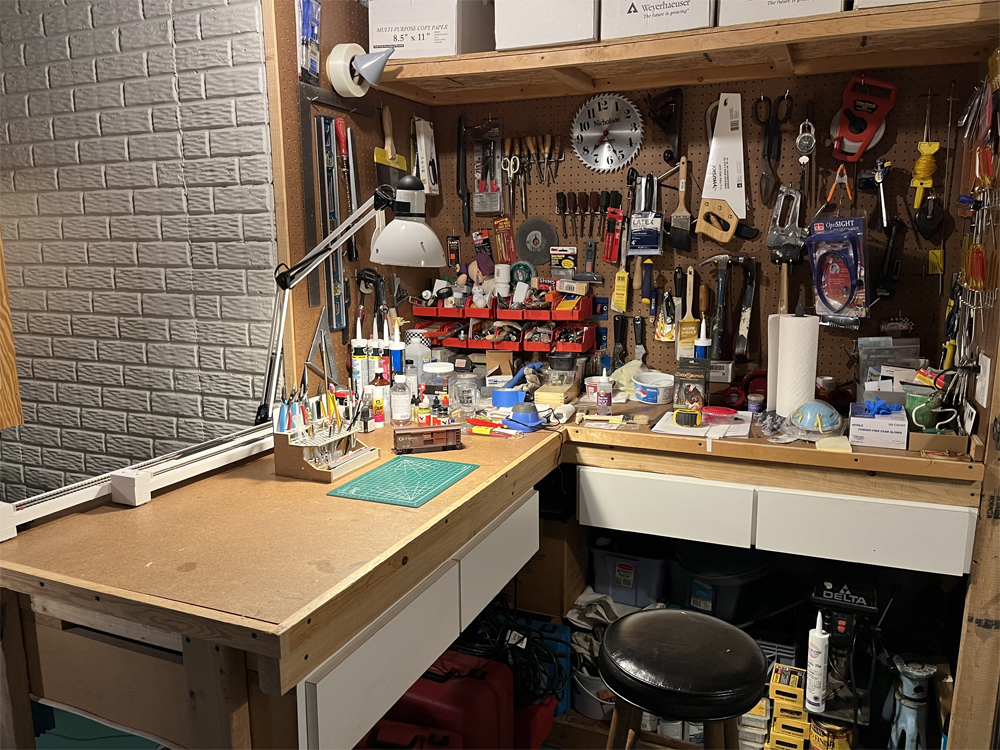
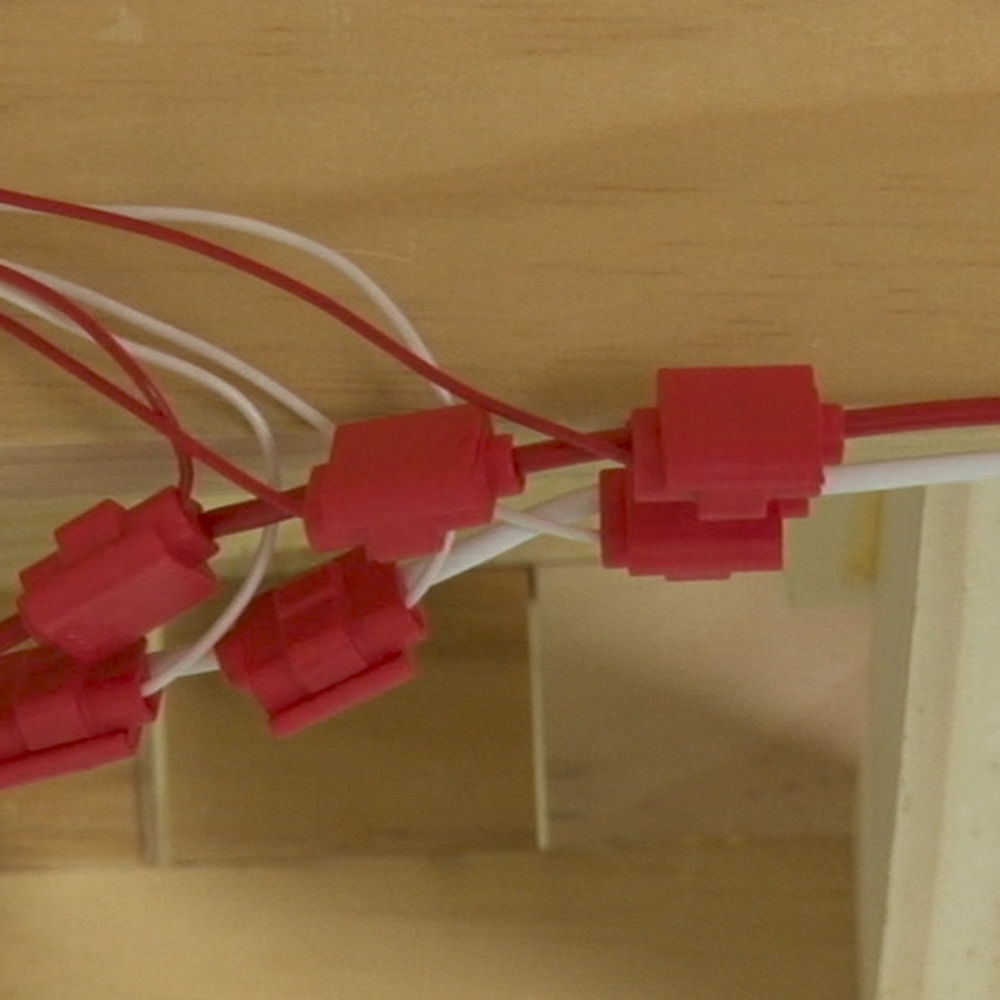




I have (rather had; I gave away my sets) the grey conductive “snap track”. Although I agree with the sentiments about the earlier “hand-laid” stuff aligning better with the philosophy of LEGO, it seems a little too fragile to me. And since my other train is 3-rail O gauge, I prefer transformer control over the onboard battery-pack. The market is ripe for a third party to produce track compatible with the conductive grey stuff – the price it fetches in the secondary market is brutal for someone who just wants to make their loop around the tree a little bit bigger.
I have mostly the grey track that was an improved version of the blue track. I like it the best because it fits most closely with the lego theme. I think it’s got the best combination of being the simplest design along with the most functional. With the additional infrastructure with more modern track adding to cost, that’s a factor too. I just wish the more modern track could be seamlessly connected to older track. I’m thankful they have kept the same gauge at least.
Never knew anything about LEGO track systems. Thanks!